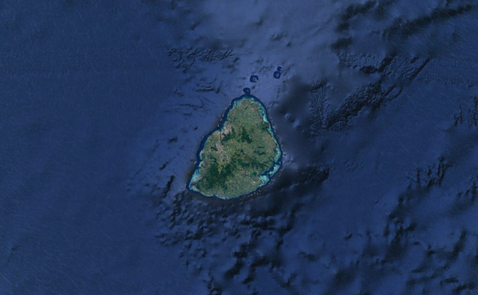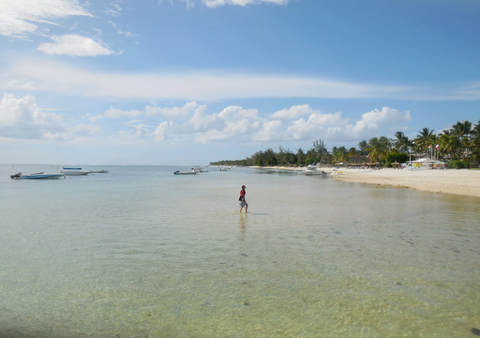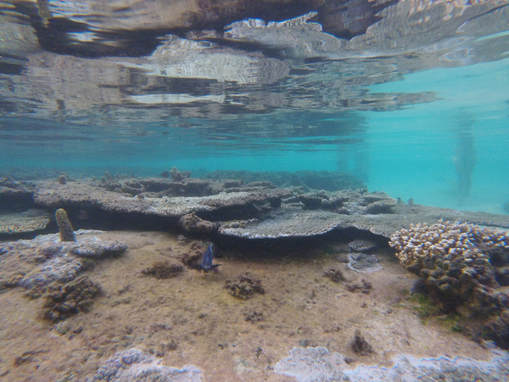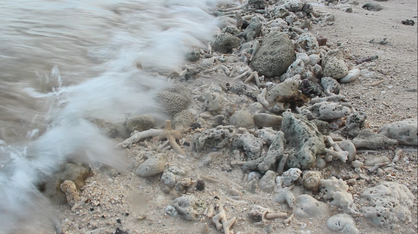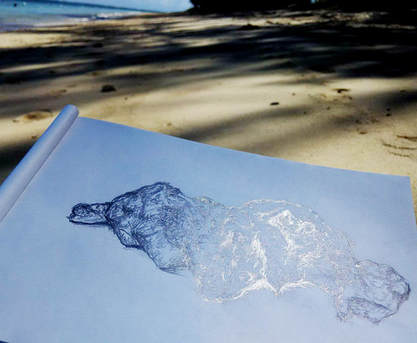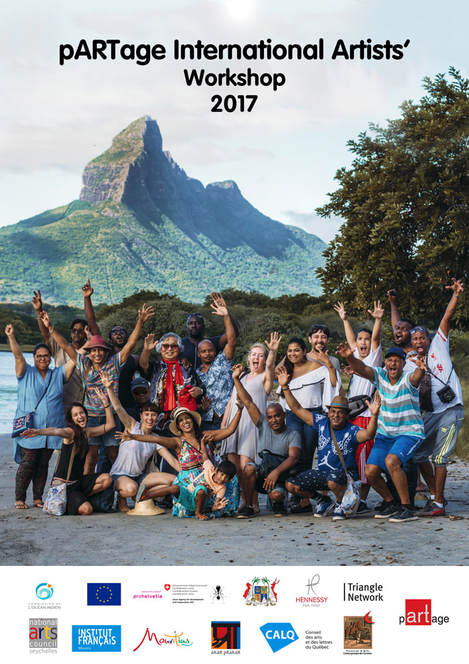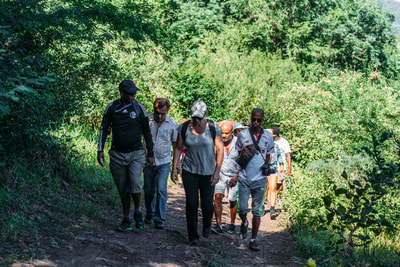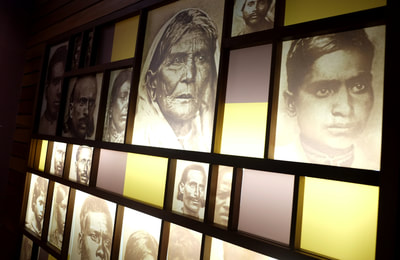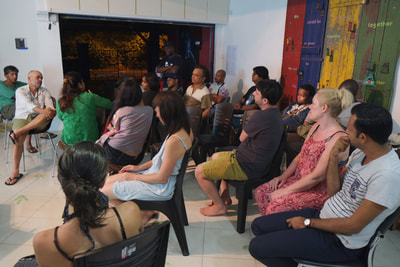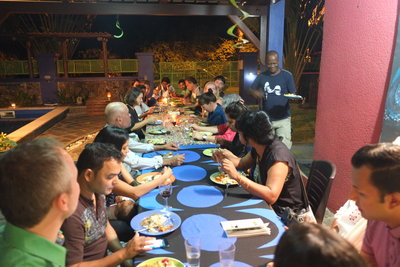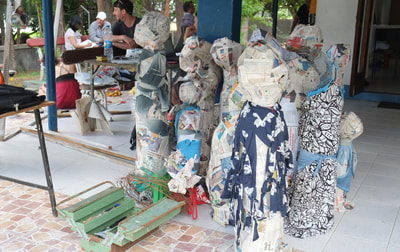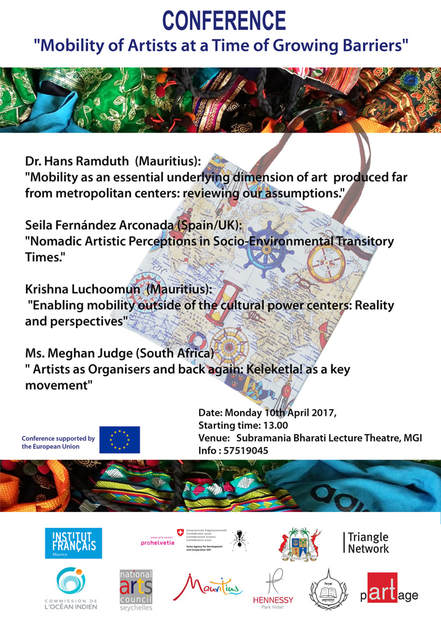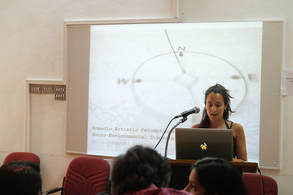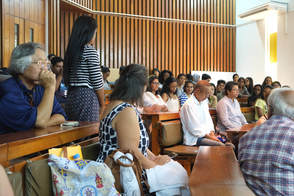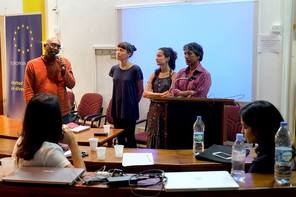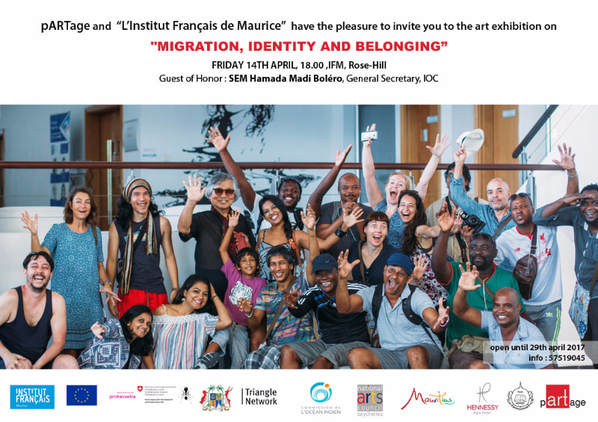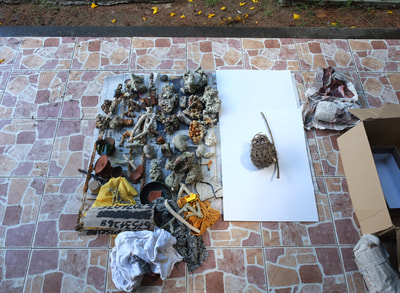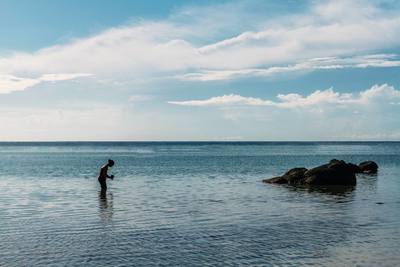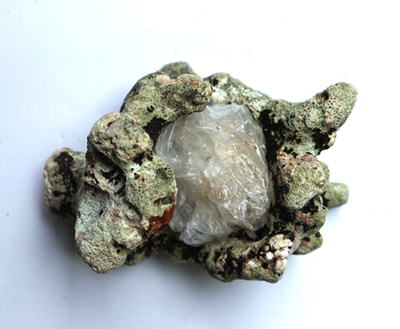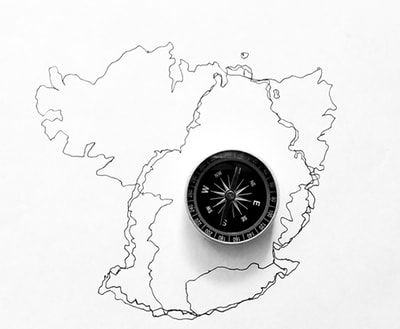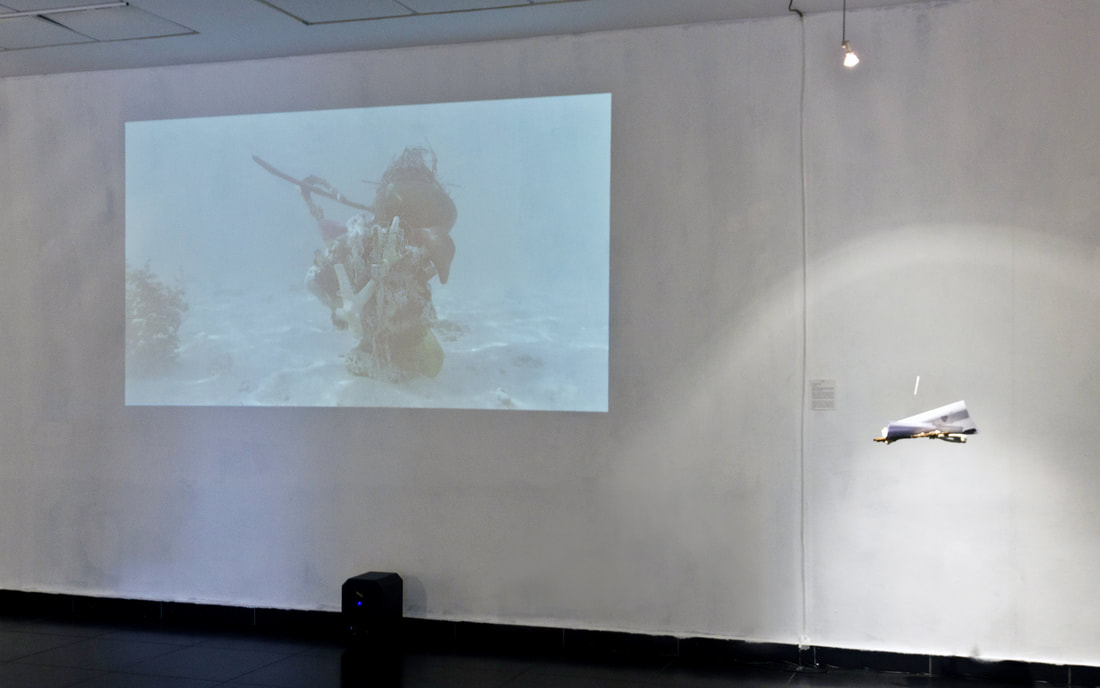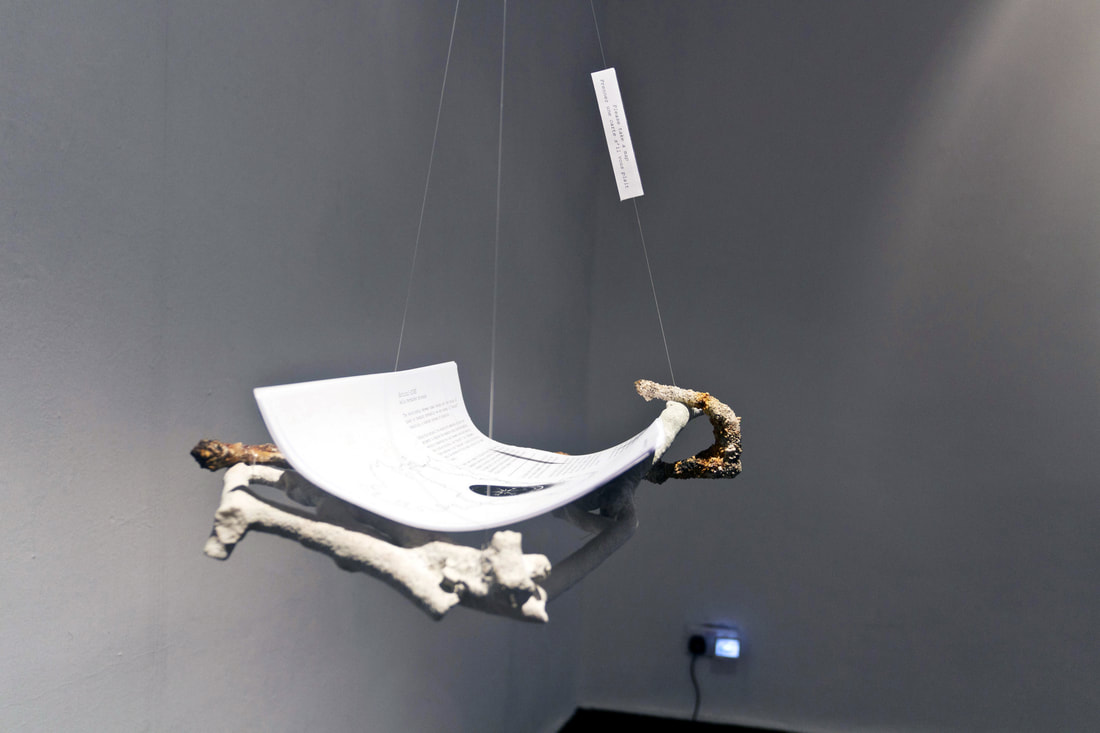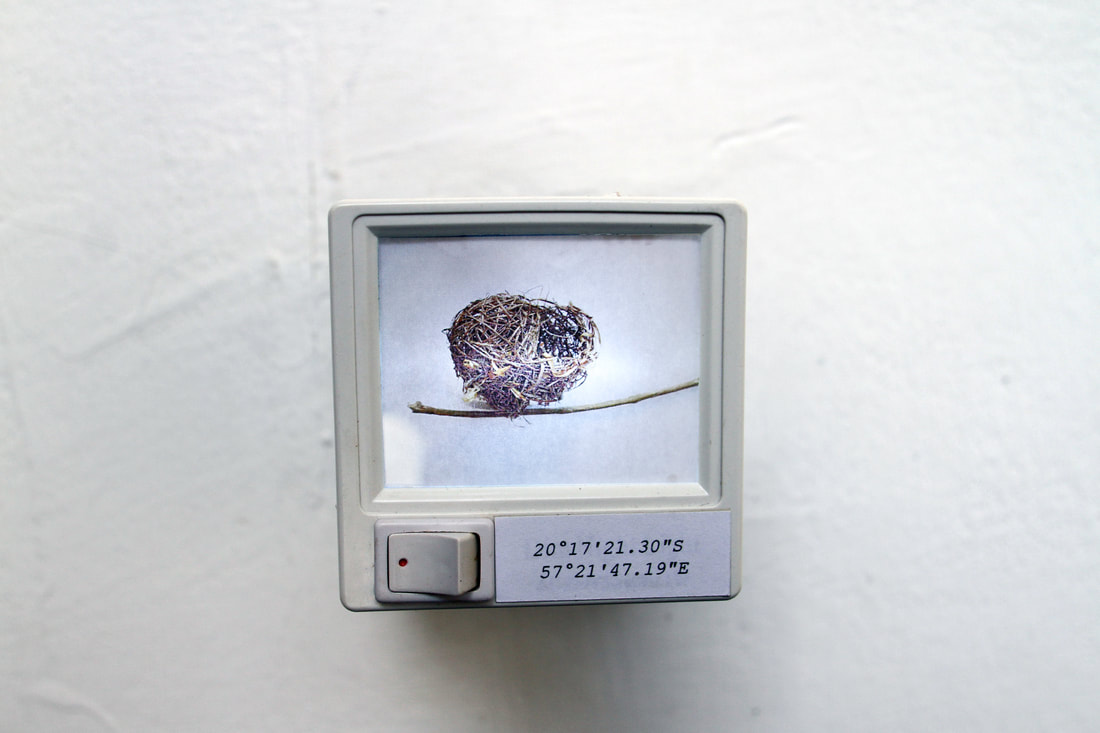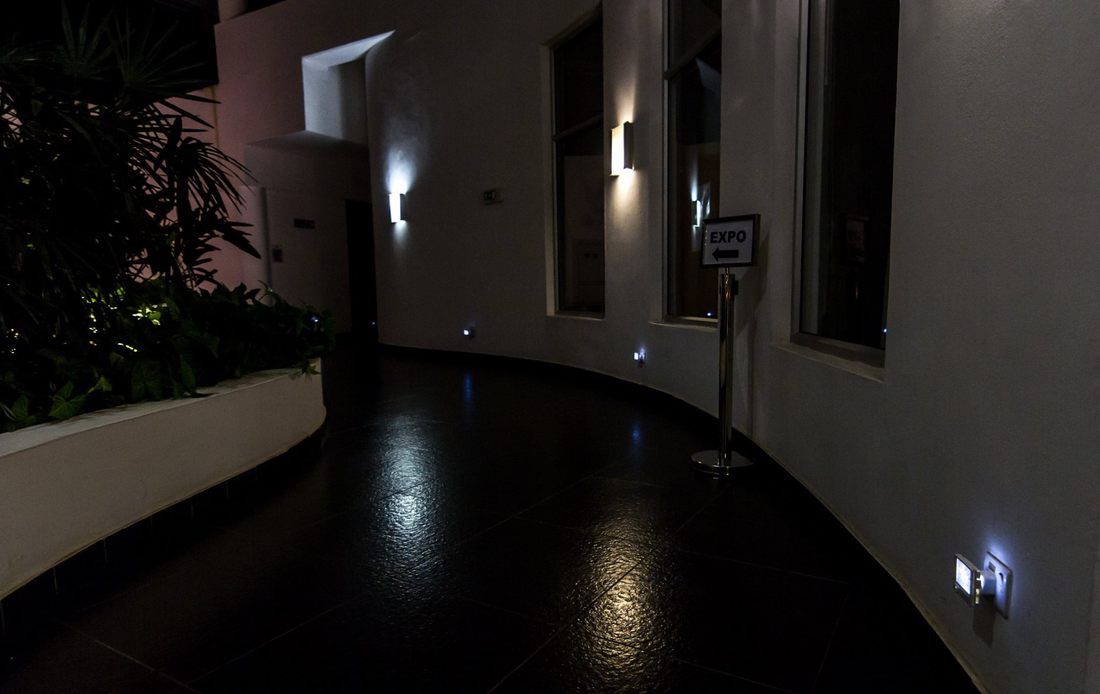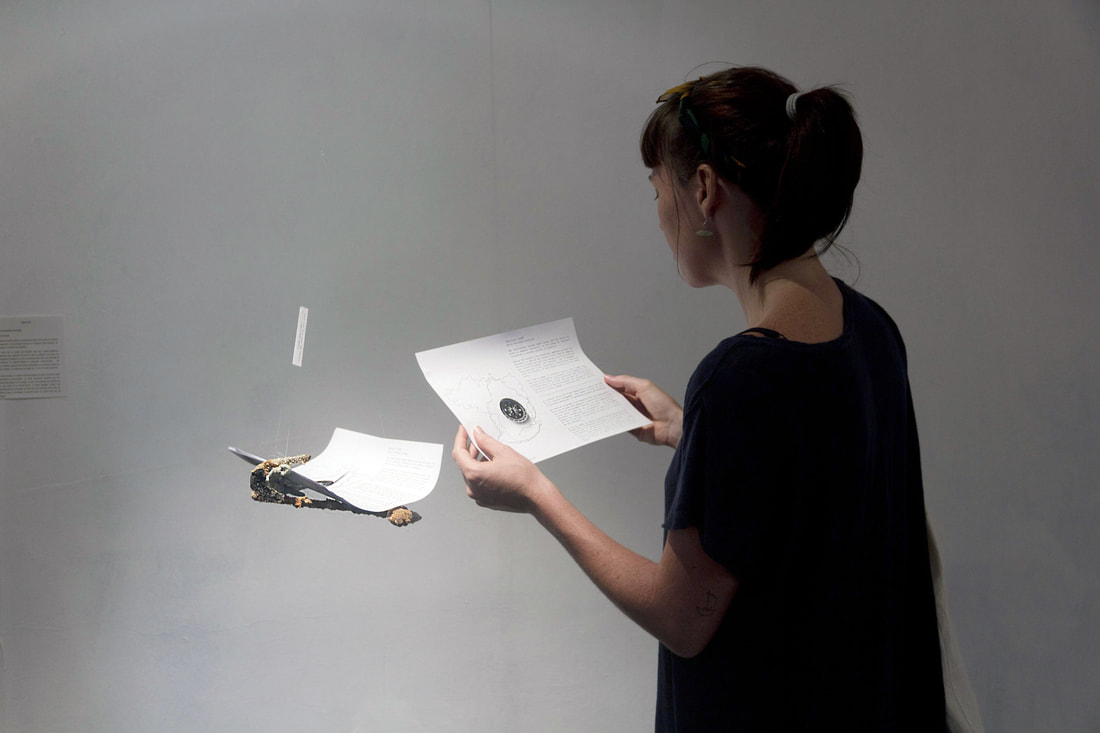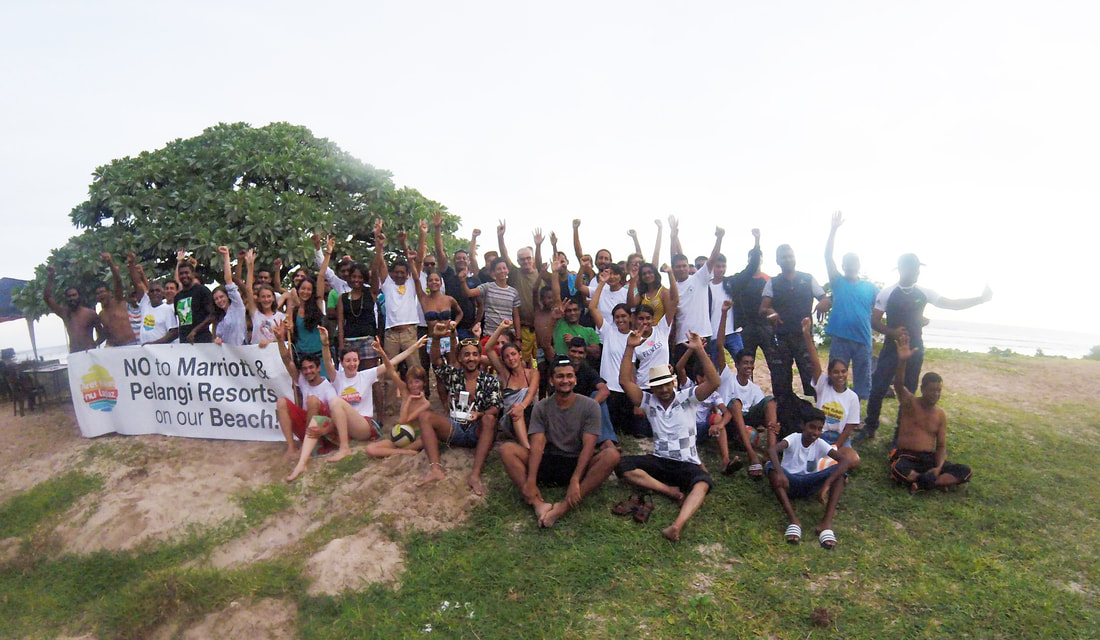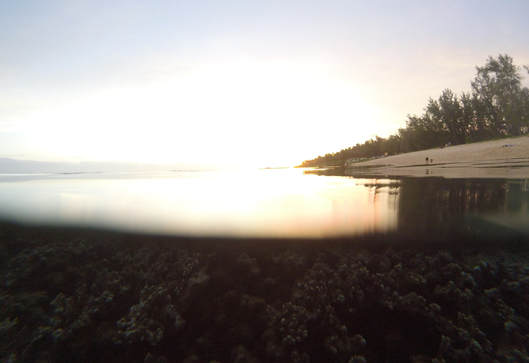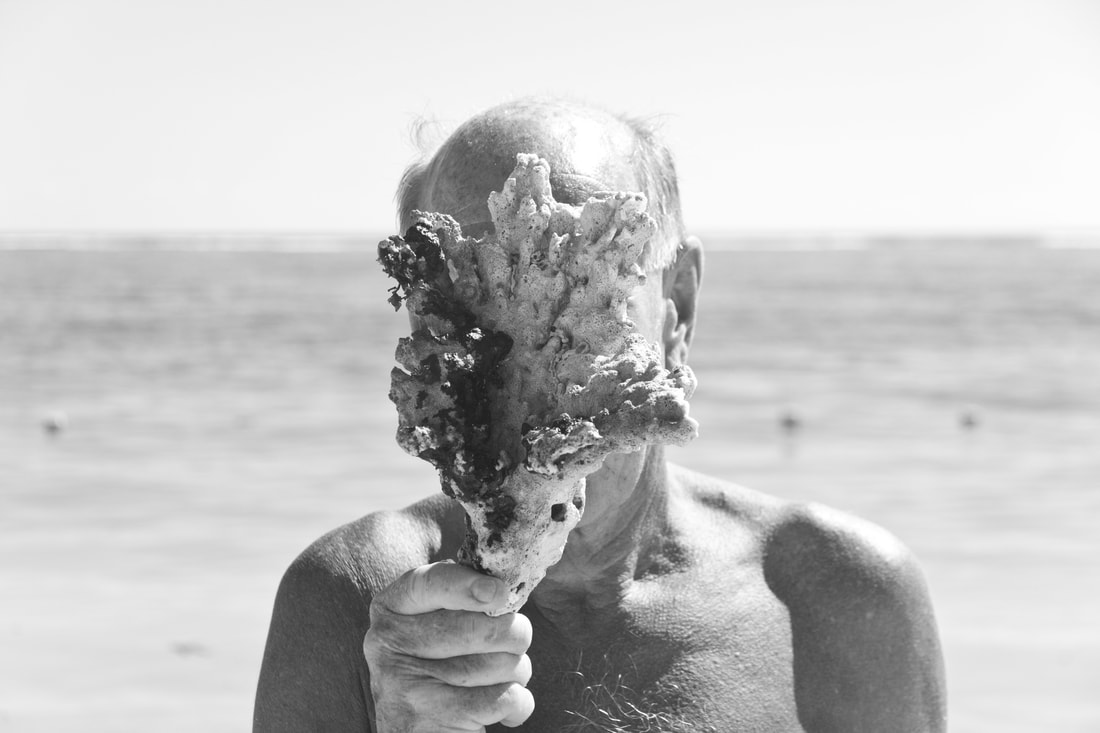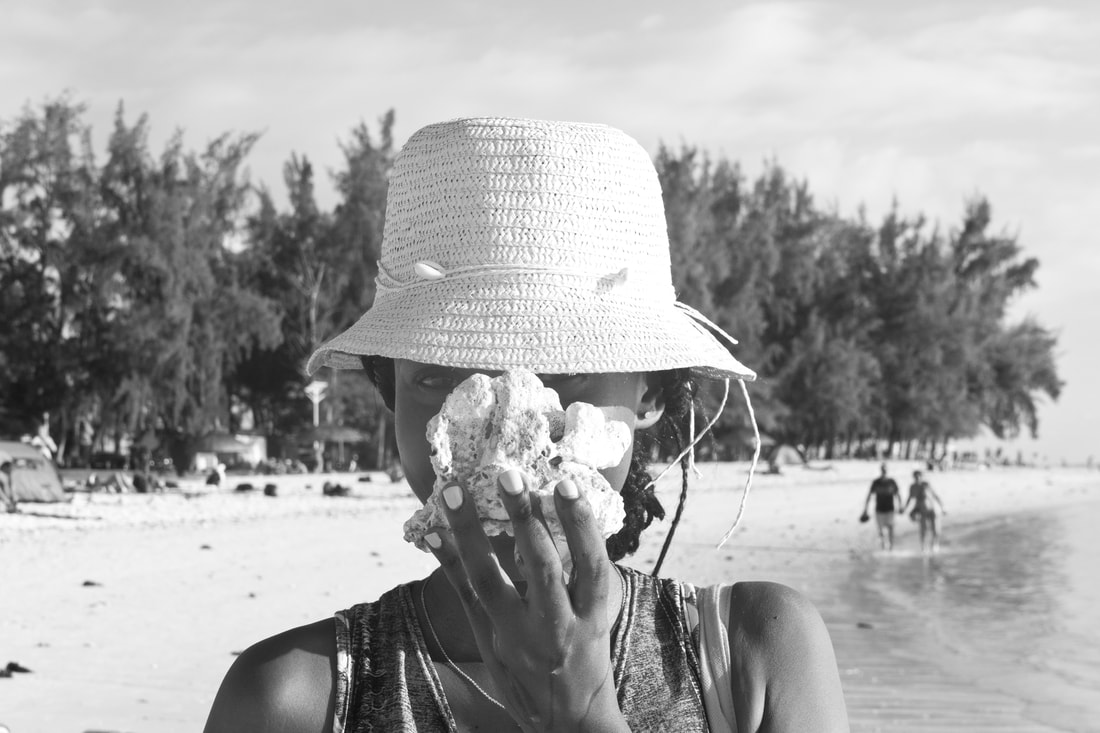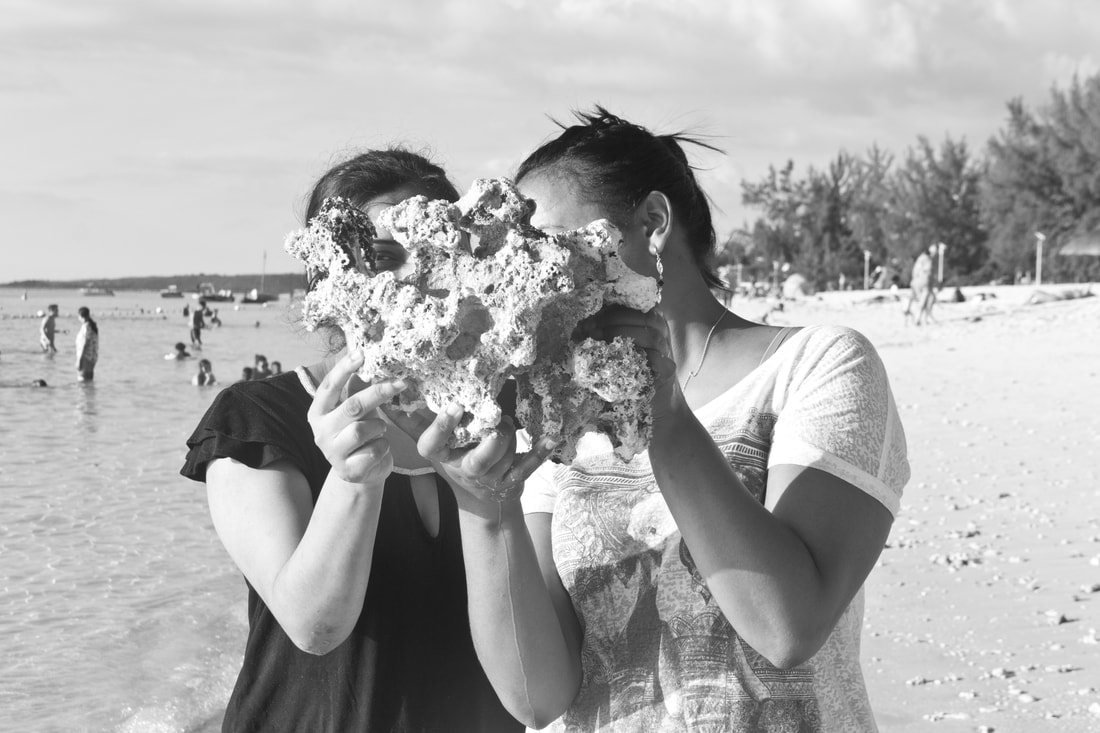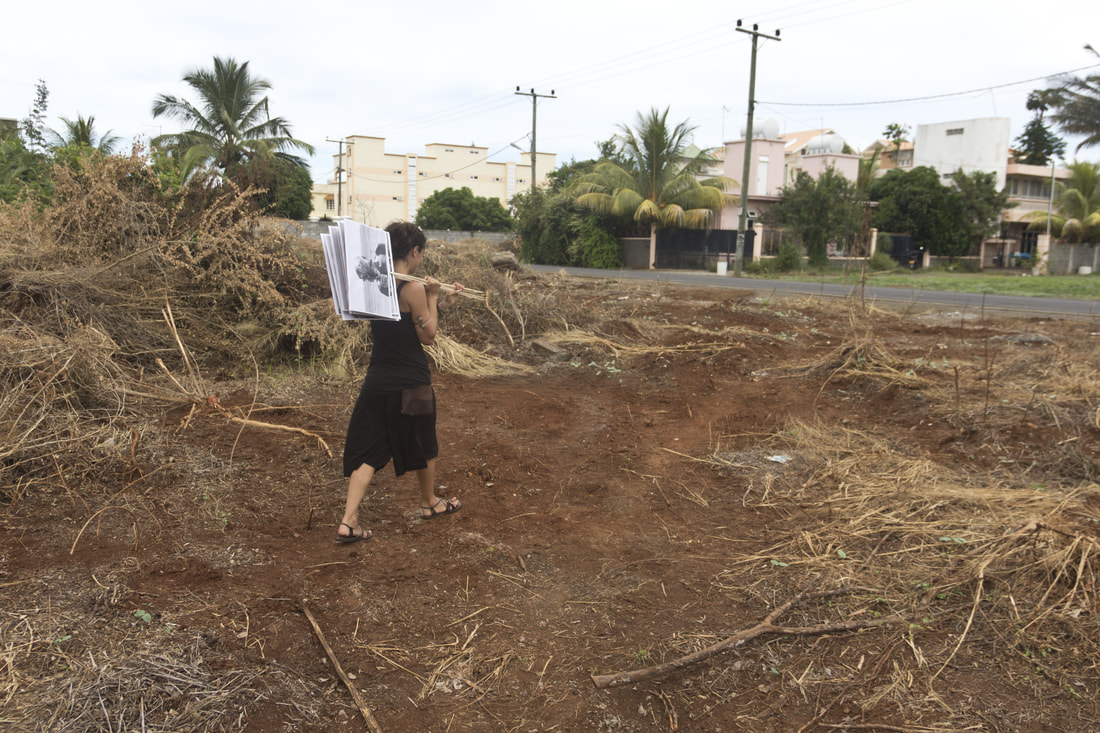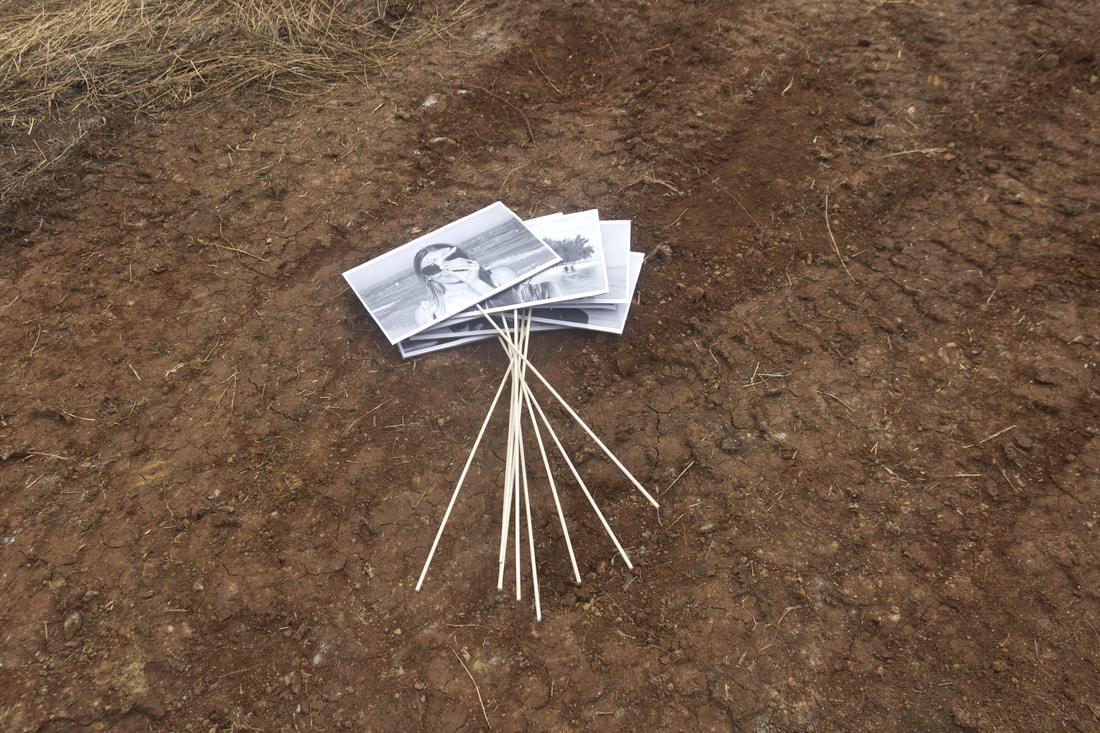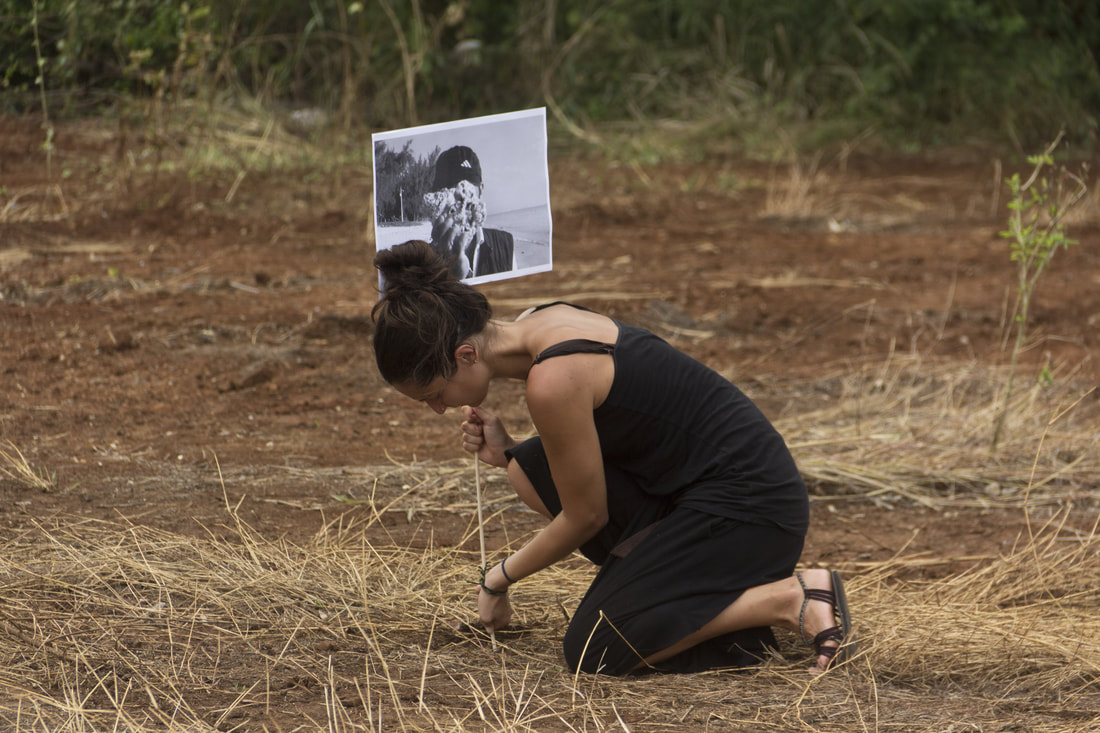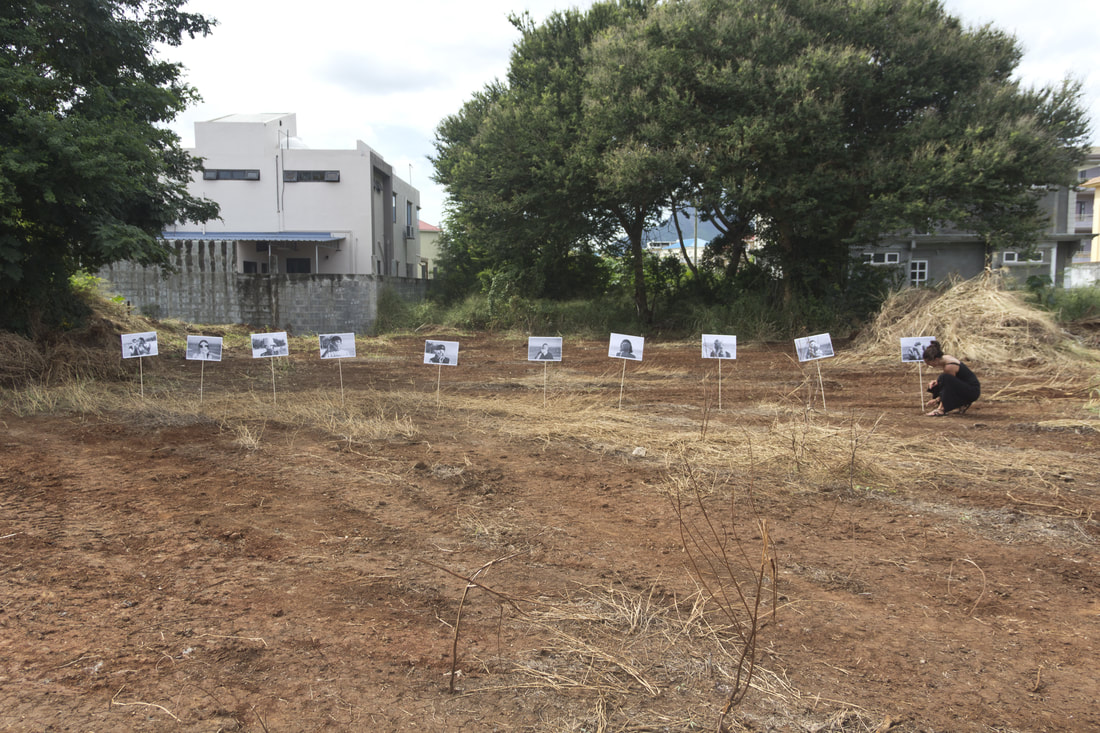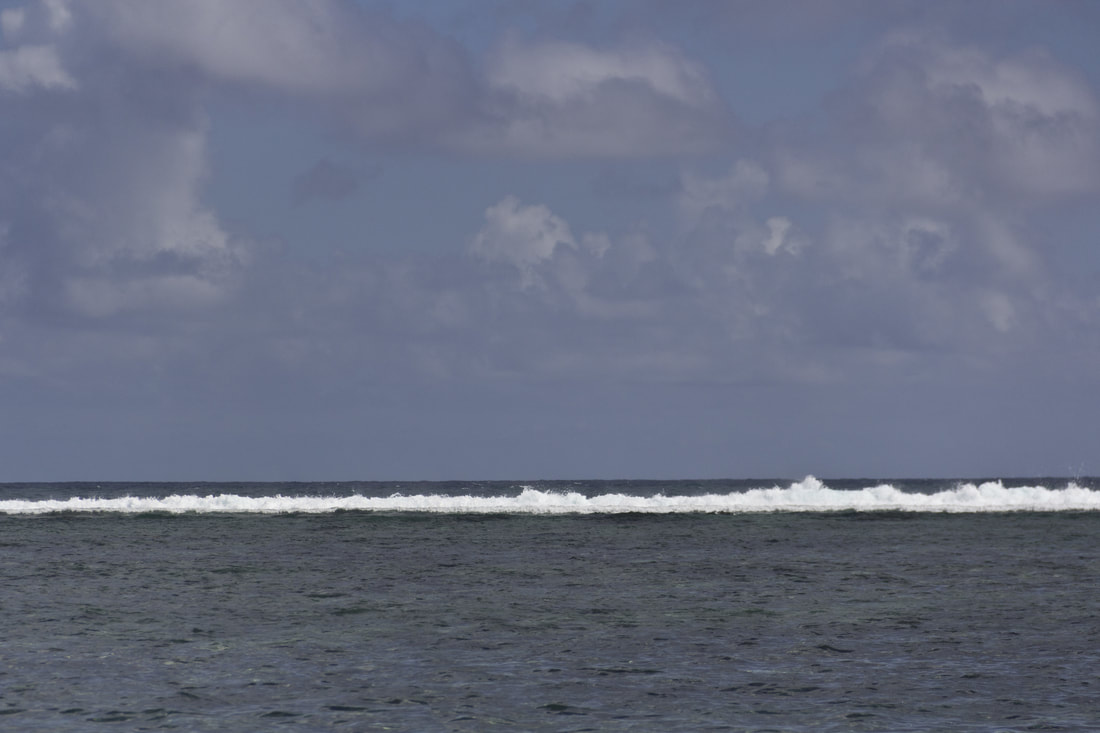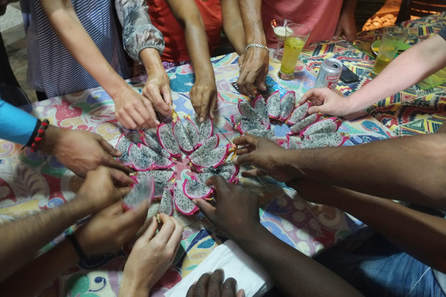Natural-ZONE : the act of collective creativity
Seila Fernández Arconada
This report is presented as an account of Natural-ZONE : the act of collective creativity realised in March-April 2017 in Mauritius; including the research I conducted while in residence at Partage and my participation at the international workshop Migration, Identity and Belonging. This describes my experiences and my practice to give insight into my artistic process and a record of the outcomes.
Introduction & Personal Approach
For a few years now, I have been developing a research based practice focusing on the exploration of artistic methodology, its boundaries and new social approaches. I have been implementing my research by working on a number of international artistic experiments.
For me Art generates dynamic relations and unfolds layers of coding, hence acting as the focus of dialogue and interaction. Participatory and collaborative research methodologies involving academics, practitioners, community members, among others, have been central to my practice. I produce artwork inspired by social and environmental contemporary concerns, always influenced by site-specific responses.
Working in Mauritius on Natural-Zone; research and orientation
Mauritius is the content and container of this artistic experiment, a hands-on collaborative artistic project to revitalize innovative thinking and creative articulations while addressing socio-environmental concerns. During this project I followed a number of methods drawn from different fields of study and transformed in an artistic experiment with two strands:
- Embracing place: Embodied artistic experiences (touching, hearing, looking, observing, exploring, analising) to explore the notion of place using creative mapping (data collection), drawing, collecting, etc. movement (walking) to understand limits between territory-identity, visible-invisible, tangible-intangible, the natural*, the in-between, etc. from ourselves (our senses) to our "container" (the island).
- Surrounded by water and the coral reef: Subverting the "subtle". Interventions making visible the invisible, dialogue between content and container in the here-now in Mauritius.
*Natural: normal, common, essential, innate, instinct, legitimate, ordinary, reasonable, usual, familiar, native, constant, regular, general. (Thesaurus Dictionary synonyms).
Seila Fernández Arconada
This report is presented as an account of Natural-ZONE : the act of collective creativity realised in March-April 2017 in Mauritius; including the research I conducted while in residence at Partage and my participation at the international workshop Migration, Identity and Belonging. This describes my experiences and my practice to give insight into my artistic process and a record of the outcomes.
Introduction & Personal Approach
For a few years now, I have been developing a research based practice focusing on the exploration of artistic methodology, its boundaries and new social approaches. I have been implementing my research by working on a number of international artistic experiments.
For me Art generates dynamic relations and unfolds layers of coding, hence acting as the focus of dialogue and interaction. Participatory and collaborative research methodologies involving academics, practitioners, community members, among others, have been central to my practice. I produce artwork inspired by social and environmental contemporary concerns, always influenced by site-specific responses.
Working in Mauritius on Natural-Zone; research and orientation
Mauritius is the content and container of this artistic experiment, a hands-on collaborative artistic project to revitalize innovative thinking and creative articulations while addressing socio-environmental concerns. During this project I followed a number of methods drawn from different fields of study and transformed in an artistic experiment with two strands:
- Embracing place: Embodied artistic experiences (touching, hearing, looking, observing, exploring, analising) to explore the notion of place using creative mapping (data collection), drawing, collecting, etc. movement (walking) to understand limits between territory-identity, visible-invisible, tangible-intangible, the natural*, the in-between, etc. from ourselves (our senses) to our "container" (the island).
- Surrounded by water and the coral reef: Subverting the "subtle". Interventions making visible the invisible, dialogue between content and container in the here-now in Mauritius.
*Natural: normal, common, essential, innate, instinct, legitimate, ordinary, reasonable, usual, familiar, native, constant, regular, general. (Thesaurus Dictionary synonyms).
Mauritius from Google Earth
Documentation of Natural-ZONE, arrival to Mauritius.
Before arrival, the starting point of my research for this project at a distance expanded my interest in the natural environment of Mauritius (as it is surrounded by the world's third largest coral reef); and the multicultural background of the local community.
The trip from Bristol (UK) to Mauritius (25 hours by flights and train) enabled me to feel the distance between my "comfort zone" and the (yet) unknown culture of my final destination which helped to build my imagination. I arrived to Mauritius on the 21st of March 2017.
During the research I began to explore distance in the island (2.040 km² size) and the different visual perspectives in relation to the coral reef from the top of the mountains to the seashore and the underwater world. This process was shared with a number of local community members and researchers both from the distance (online) and locally.
Coral reefs are very sensitive to changes in the ocean therefore very vulnerable. There is an extensive academic research interest about them and the ecosystem they protect, as its accelerated process of degradation globally is connected to climate change and human development and pollution. I started to experience the coral reef as the main protector of the island; it is a fact that is a protective barrier from coastal and marine natural hazards.
Documentation of the making process, Natural-ZONE by Gavin Nawaga
"Walking the in-between, the place where low tide unveils the hidden of what is there, brought by the sea to here, to our boundary... The waves swing the corals already detached from their home; they have lost their life. I can hear the echo of the strong waves crashing with the reef, the protection border of this island. Home means that barrier, the means of this island to exist, to be protected, and to 'remain as it is'. I wonder what would happen if the coral reef disappears". (Notes from the Natural-ZONE artistic logbook, March 2017).
Walking was an important method in this research, moving with this natural rhythm allowed me to be more in tune with nature while observing and experimenting in the area. I walked the coastline in the North, East, South but mostly West where I was based.
Low tide became an important time in my daily agenda, moments where I was able to experience the seashore (or intertidal zone: between low and high tide), a space ‘in between’ became an important concept in this project and often a location for encounters and creation during my residency.
Walking was an important method in this research, moving with this natural rhythm allowed me to be more in tune with nature while observing and experimenting in the area. I walked the coastline in the North, East, South but mostly West where I was based.
Low tide became an important time in my daily agenda, moments where I was able to experience the seashore (or intertidal zone: between low and high tide), a space ‘in between’ became an important concept in this project and often a location for encounters and creation during my residency.
Documentation of the making process, Natural-ZONE
Paradise noun UK /ˈpær.ə.daɪs/ US /ˈper.ə.daɪs/
1. a place or condition of great happiness where everything is exactly as you would like it to be. (Cambridge dictionary). This idea of paradise sold in such a tropical island was diffused for the first time when I was able to see what the sea brought to the coast, mostly fragmented corals detached from their ecosystems and visible along the beaches.
In the same way as hotel workers bury corals on the beach to hide them from tourists this is just the surface image of local (and global) contemporary concerns. During this research, I talked to a substancial number of people about the relationship between the human development within the island and the coral reef; I was wondering how much the coral reef is considered from national policies to individual local actions in order to live sustainably in a harmonious island ecosystem.
During the series of walks on the coastline I began to collect broken coral fragments, make photographs and videos of encounters, record soundscapes, draw, etc. while interviewing locals and visitors. Sometimes inviting them to join me in those creative processes enabled an expanded time of sharing and understanding. These experiences reinforced my belief on the artistic experience that enhances sociological and environmental consciousness, and a number of skills and learning.
pARTage International Workshop: Migration, Identity and Belonging
This complex research and experience was enriched with the experience at Partage International workshop where 17 international artists from different countries (named in acknowledgments) were invited by pARTage Mauritius to work, exchange and reflect on the theme: "Migration, Identity and Belonging".
1. a place or condition of great happiness where everything is exactly as you would like it to be. (Cambridge dictionary). This idea of paradise sold in such a tropical island was diffused for the first time when I was able to see what the sea brought to the coast, mostly fragmented corals detached from their ecosystems and visible along the beaches.
In the same way as hotel workers bury corals on the beach to hide them from tourists this is just the surface image of local (and global) contemporary concerns. During this research, I talked to a substancial number of people about the relationship between the human development within the island and the coral reef; I was wondering how much the coral reef is considered from national policies to individual local actions in order to live sustainably in a harmonious island ecosystem.
During the series of walks on the coastline I began to collect broken coral fragments, make photographs and videos of encounters, record soundscapes, draw, etc. while interviewing locals and visitors. Sometimes inviting them to join me in those creative processes enabled an expanded time of sharing and understanding. These experiences reinforced my belief on the artistic experience that enhances sociological and environmental consciousness, and a number of skills and learning.
pARTage International Workshop: Migration, Identity and Belonging
This complex research and experience was enriched with the experience at Partage International workshop where 17 international artists from different countries (named in acknowledgments) were invited by pARTage Mauritius to work, exchange and reflect on the theme: "Migration, Identity and Belonging".
Partage became an international hub full of creative insights and collective narratives based on participant experiences and interests. During the workshop we worked in the concepts of migration, identity and belonging from conceptual approaches, our own backgrounds, experiences in relation to the context of the workshop: Mauritius.
Mauritius has a strong multicultural heritage based on migration. There are different colonial heritages including Dutch, French and British but also different religions which allow us to experience a context of diversity, important for us and for Mauritians. During the workshop we had a number of fields trips including Aappravasi Ghat , world heritage site (immigration depot where labour workforce from India arrived to the country) and Le Monde Brabant which highlights the historical significance of slavery and indenture (labour systems that shaped modern Mauritius) both important references in the history and cultural identity of Mauritius.
Migration, Identity and Belonging workshop documentation
Critical thinking, creativity and curiosity were the main ingredients in this workshop; all participants shared art as a form of expressing thoughts and feelings, however, we acknowledged the amount of definitions for contemporary art and the importance of learning from each other’s perceptions of art (in relation to the political contexts where artist are based together with the strengths and weaknesses of the art system).
Presentations of each of the participant practices, discussions, shared experiences and practical work in the shared studio were part of the schedule of the workshop.
In addition the conference Mobility of Artists at a Time of Growing Barriers took place during the workshop presenting different views of such an important global topic. In this conference I presented the talk "nomadic artistic perceptions in socio-environmental transitory times" focusing in the growing barriers within the EU.
In addition the conference Mobility of Artists at a Time of Growing Barriers took place during the workshop presenting different views of such an important global topic. In this conference I presented the talk "nomadic artistic perceptions in socio-environmental transitory times" focusing in the growing barriers within the EU.
Documentation of Mobility of Artists at a time of growing barriers by Nilesh Boodhun
Migration, Identity and Belonging exhibition at Institut Français
The work created during the workshop was the conclusion of creative exchanges, learning and local inspiration. The final outcome was presented at the exhibition "Migration, Identity and Belonging" at the Institut Français Mauritius in Rose Hill (Mauritius).
The opening exhibition was absolutely mind blowing thanks to all the shared energy of the workshop participants, the active audience interested in knowing more about the work and all involved in the workshop experience.
Documentation of the exhibition Migration, Identity and Belonging by Nilesh Boodhun
For this exhibition I presented the work Natural-ZONE. This work focused in embodied artistic experiments with which I continued exploring the seashore. In a changing relationship between human beings and place, I believe this is a constant process of migration based on movement. In this context the coral reef becomes a mirror of its inhabitants, a home and shelter for us all therefore an important aspect of Mauritian identity.
Documentation of the making process, Natural-ZONE by Nilesh Boodhun
Detail of work Natural-ZONE
During these weeks I collected a number of items that formed an underwater intervention, a personal ritual shaped with collective stories from the seashore. This performance was presented in the exhibition as a video piece documenting the sculptural intervention in the bottom of the ocean; static but in constant change as the water surface acts as lenses to interfere with the light.
In addition, as part of the installation, a number of images were projected into dim lights, displayed in different parts of the space, a subtle intervention that highlighted other aspects of the process including local proverbs, written and visual notes, maps and drawings. To find these works I made a map out of colonial representations of Mauritius (maps from the Dutch, French and British cartography) merging with the map of the exhibition space, inviting the viewer to actively engage and find more about this project.
In addition, as part of the installation, a number of images were projected into dim lights, displayed in different parts of the space, a subtle intervention that highlighted other aspects of the process including local proverbs, written and visual notes, maps and drawings. To find these works I made a map out of colonial representations of Mauritius (maps from the Dutch, French and British cartography) merging with the map of the exhibition space, inviting the viewer to actively engage and find more about this project.
Documentation of Natural-ZONE at Institut Français Mauritius
After the workshop experience
I continued mapping Mauritius creatively. While looking at the horizon in the coastline I mapped borders as if I was a compass rose, from me to the horizon (the high tide mark, the seashore, the low tide mark, the safety swimming zone and its limit with buoys, the boat road, the coral reef, the ocean and the horizon) and along the coast line where the privatization process shows numerous "private land" signs and obstacles along the beach (including hotels and private housing owners).
I continued mapping Mauritius creatively. While looking at the horizon in the coastline I mapped borders as if I was a compass rose, from me to the horizon (the high tide mark, the seashore, the low tide mark, the safety swimming zone and its limit with buoys, the boat road, the coral reef, the ocean and the horizon) and along the coast line where the privatization process shows numerous "private land" signs and obstacles along the beach (including hotels and private housing owners).
Documentation, work in progress Natural-ZONE
Neoliberalism based on colonial financial relationships including multinational hotel companies and foreign offshore interest in property investment are speeding up the process of urban development and privatization of the island. A global problem but located in a smaller scale, in this case Mauritius.
I was able to meet Blue Lagoon marine conservation NGO based in the south of the island, whom action is very important work. I was surprised to hear that since Blue Bay became a national protected area the coral has eroded and bleached to dead in many areas due to mass tourism. It hasn't been that long. In addition, another aspect of interest to me was that a national survey shows that 80% of Mauritians do not know how to swim, therefore, they have never engaged with the coral themselves and that is possibly a reason why there isn't much awareness of the marine ecosystem and its importance.
I was shocked and disappointed to hear from a number of researchers that the coral reef in Mauritius could have a life expectancy of less than 10 years. The article published while in residence (Great Barrier Reef at 'terminal stage scientists despair at latest coral bleaching data.) made the subject matter even more urgent to tackle seriously.
I was able to meet Blue Lagoon marine conservation NGO based in the south of the island, whom action is very important work. I was surprised to hear that since Blue Bay became a national protected area the coral has eroded and bleached to dead in many areas due to mass tourism. It hasn't been that long. In addition, another aspect of interest to me was that a national survey shows that 80% of Mauritians do not know how to swim, therefore, they have never engaged with the coral themselves and that is possibly a reason why there isn't much awareness of the marine ecosystem and its importance.
I was shocked and disappointed to hear from a number of researchers that the coral reef in Mauritius could have a life expectancy of less than 10 years. The article published while in residence (Great Barrier Reef at 'terminal stage scientists despair at latest coral bleaching data.) made the subject matter even more urgent to tackle seriously.
Aret Kokin Nu Laplaz event in Pomponnette beach by Gavin Nawaga
Aret Kokin Nu Laplaz is a local activist group aiming to protect the coastline of Mauritius from multinational hotel developments. When I was there were about 8 plans for 5-star hotels in Mauritius taking place despite the fact that any 5-star hotels on the island haven't got full occupation during most of the year. The struggle is still taking place months after I left, I really hope the environmental consciousness can save Pomponnette beach, one of the current cases in Mauritius.
Pomponette beach, Mauritius by Gavin Nawaga
Intervention before departure
Flic en Flac, the residency location has a number of "abandoned" plots of land where nature has taken over; natural ecosystems where not only plants and trees live but many animals. An afternoon I was at the Partage when I saw an excavator driving on these ecosystems to destroy them. The answer of such an action from the local council was: this is a clearance process. Native forest in Mauritius reaches less than 1% of the island territory.
During the process research process of Natural-ZONE, I talked to a number of people on the beach. After the conversations I asked them if they could choose a coral they like to cover their face for a portrait which became a photography series. I chose 10 of those as temporary memorials of those destroyed nature.
Flic en Flac, the residency location has a number of "abandoned" plots of land where nature has taken over; natural ecosystems where not only plants and trees live but many animals. An afternoon I was at the Partage when I saw an excavator driving on these ecosystems to destroy them. The answer of such an action from the local council was: this is a clearance process. Native forest in Mauritius reaches less than 1% of the island territory.
During the process research process of Natural-ZONE, I talked to a number of people on the beach. After the conversations I asked them if they could choose a coral they like to cover their face for a portrait which became a photography series. I chose 10 of those as temporary memorials of those destroyed nature.
Images part of the photography series Natural-ZONE
This process was transformed in an intervention in the public space. I placed them in one of the bared plots of land highlighting the space. A few curious people came to ask what I was doing and the process took longer than expected; a woman came to tell me that she protected the remaining tree where we were.
The result of the intervention was left there exposed to the weather; the wind was moving them slowly creating a dance between them all.
The result of the intervention was left there exposed to the weather; the wind was moving them slowly creating a dance between them all.
Documentation of Natural-ZONE by Nilesh Boodhun
I am a curious person and an artist. For me an artist should respond to the here and now, observing, experiencing and questioning reality over and over again; to unveil and deconstruct such facades there is a need commitment.
I am aware of the complexity of judgments involved in this work. I can only base my responses on my own ‘outsider’ experience and research. However, one of my conclusions is the urgent need of reconsidering sustainable development in the island looking at both environmental and human rights; looking after their community and nature including the coral reef which protects its inhabitants. I have no answers or solutions. There are no simple solutions, what I have as my conclusion of this residency is many more questions which I aim to continue developing in this project in Mauritius and my own artistic career.
Documentation of Natural-ZONE, view from Flic en Flac
Acknowledgments
Special thanks to Krishna Luchoomun, Sultana Haukim and Partage for making it happening. Thanks to all the people I encounter in this journey and in special to all participant artists at the workshop for the intense shared experience which became an unforgettable memory for us all, not only of artist peers but friends.
Special thanks to Krishna Luchoomun, Sultana Haukim and Partage for making it happening. Thanks to all the people I encounter in this journey and in special to all participant artists at the workshop for the intense shared experience which became an unforgettable memory for us all, not only of artist peers but friends.
Workshop participants: Yann Pocreau - CANADA, Zainou Elabidine Ali Mohamed (COMOROS), Dagrún Matthíasdóttir (ICELAND), Gunjan Tyagi (INDIA), Li Cho Hsien Mathieu (MADAGASCAR), Deepa Bahadoor (MAURITIUS), Nirmala Luckeenarain (MAURITIUS), Gerard Foy (MAURITIUS), Nirmal Hurry (MAURITIUS), Krishna Luchoomun (MAURITIUS), Sultana Haukim (MAURITIUS),, Pamela Sunnee (MAURITIUS), Jason Celine (MAURITIUS), Pravesh Gungah (MAURITIUS), Alix Le Juge (MAURITIUS), Vick Shibdoyal (MAURITIUS), Nalini Gopaul (MAURITIUS), Mala Ramyead (MAURITIUS), Muntasir Koodruth, (MAURITIUS), Jean Yves Lonfle (MAURITIUS), Reynald Alaguiry (REUNION/FRANCE), Kako (REUNION/FRANCE), Allen Barreau (SEYCHELLES), Leonard Nigel Henri (SEYCHELLES),James Patrick Agricole (SEYCHELLES), Rude Robert Alexis (SEYCHELLES), Meghan Judge (SOUTH AFRICA), Clemens Sou (SOUTH KOREA), Sydney Kacele Siansangu (ZAMBIA),Seila Fernández Arconada (SPAIN/UK), Takura Tawandaphilemon (ZIMBABWE).
Thanks to Gasworks London and Triangle Network for giving me this unique opportunity which I am very grateful to have experienced and learn from.
Text writen by Seila Fernández Arconada
All images without credits have been taken by Seila Fernández Arconada
